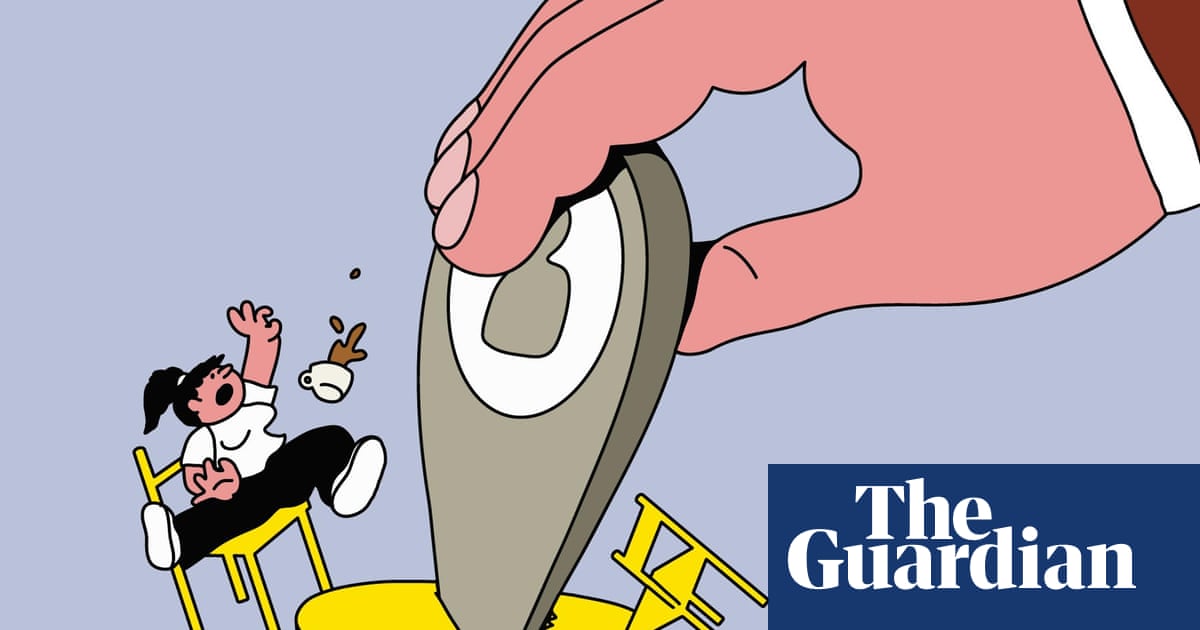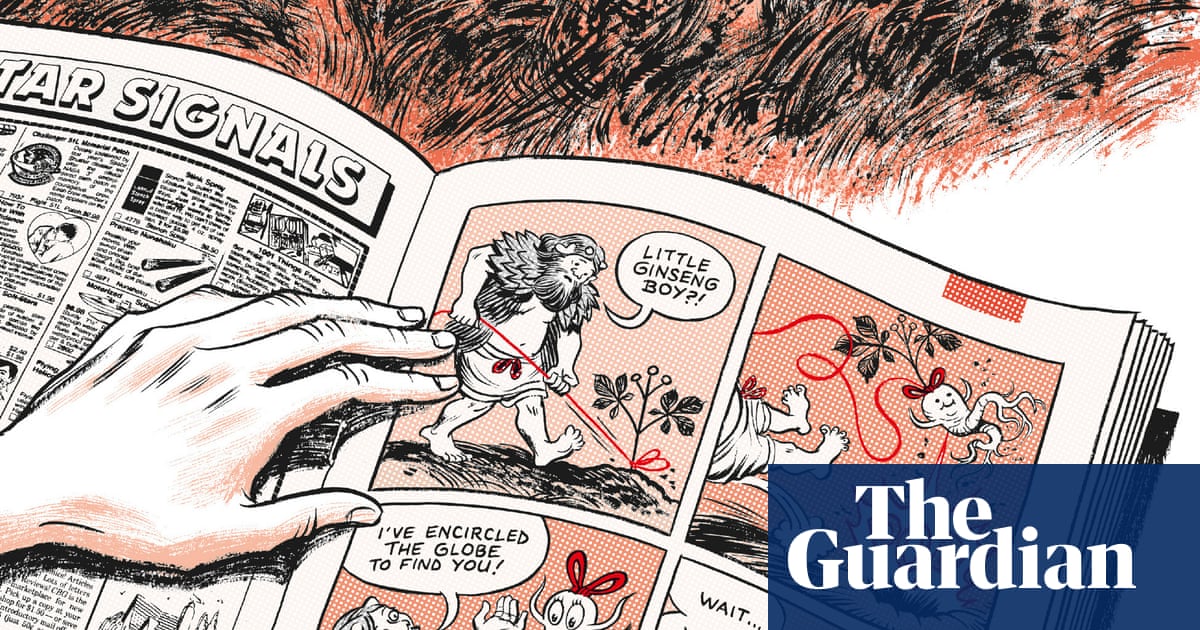I think this is the Cure image that’s most reproduced. I’ve met people with tattoos of it. It’s been bootlegged, like, millions of times. The bootlegs are rubbish, though – half the time someone’s obviously cut the stencil out with a scalpel, and it’s so crude.
This image was used for the cover of Boys Don’t Cry when it was rereleased in 1986. It was taken during the video shoot, which featured three boys playing the band when young. I used to just go to those shoots as a fly on the wall, grabbing shots where I could – you try to not get in the way.
Robert Smith does that thing with his hand when he relaxes – I guess playing guitar must be quite tiring on the hands – so there’s a lovely restfulness about the image. I like how reflective it is. The silhouette of Robert was always interesting to me: the guitar, the hair, it always seemed to work. I like the dramatic, mysterious feel of the image.
I’ve worked with clients who are not specific about what they want, and you’re always thinking in the back of your mind: “Am I doing the right thing?” Every creative probably goes through that. But Robert knows what he wants: it’s good to work with people like that.
I started collaborating with the Cure in 1981. Whenever we did a shoot, the band would ask: “Do you think you got something good?” And I would say: “I don’t know until I’ve developed it.” You’re grabbing things, you’re playing with spontaneity. You see stuff through the viewfinder, and you’re composing in that. It was only later on in my career that I also started taking Polaroids.
On this shoot, though, the film jammed. I wound it back into the camera, hoping for the best. When I took it to the lab I said: “I’m not sure anything’s on this.” But there was, and when I showed the pictures to Robert and the band’s then manager, Chris Parry, the next day, they jumped up and down and said: “That’s the picture we’re going to use.” It was frame 21 on the film and it had jammed at 22 – I was lucky. That’s the beauty of this kind of work: sometimes we’re successful because of the choices that we make, but sometimes it’s the choices other people make.
The original image is black and white but the record cover is a colourised version, where I’ve used photographic dyes on top of the print. There are slight pinks and yellows and things in there, but it’s subtle. I was taught at art school to add and enhance, not take away, so I still wanted it to feel on the monochromatic scale. I didn’t want it to look too tripped out, I wanted it to have realism. But I do think I captured exactly who the Cure are with that picture, and it’s been tried and tested since with the amount of people who relate to it.
When I was younger, I had a paper round specifically so I could buy records. Then I would hide away in the corner of my house with headphones on, immersing myself in the record sleeves. I remember thinking Meddle by Pink Floyd was the best thing. It’s just a brilliant cover – a big ear with water droplets on it. It was trippy and amazing and summed up a brilliant album. Now I’ve got students who want to get into music-industry design. I don’t know if it’s easy or difficult today, but I think if you’ve got talent and passion, you can do whatever you want.
Until 1 June, 700 unique artist-designed record sleeves, including Andy Vella’s new the Cure design, are in a global online auction in aid of War Child, the specialist charity for children caught in conflict

Andy Vella’s CV
Born: Hampshire, 1961
Trained: Royal College of Art
Influences: Man Ray, André Kertész, Raoul Ubac, Wols
High point: “There are three: being invited by War Child to design a sleeve for Secret 7” 2025; having my Obscure book of photographs exhibited in Sydney Opera House in 2019; and, at Mick’s request, shooting Mick Rock’s portrait”
Low point: “Not having my camera with me when I see a great photo!”
Top tip: “Shoot loads. Think of the composition within the frame, and what it is you are trying to capture or communicate. Use light, fogging or real distortion for effects rather than relying on post-production. Go for authenticity. I try not to get bogged down with the technical, I aim for what I am after and allow all mistakes to hijack what it is I am creating.”

 17 hours ago
11
17 hours ago
11













































